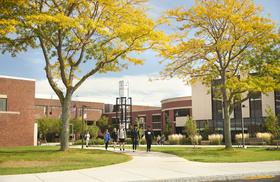For the past several years, enrollment at community colleges has grown at an astronomical rate, but that trend appears to be reversing somewhat. A recent report suggests that enrollment at community colleges is beginning to slow, but why? The conditions that led to the rapid increase in enrollment, the sluggish economy, and the high unemployment rate are still in effect. So what is the difference? As we explore this subject more deeply, the possible reasons for the enrollment slowdown may surprise you.
The Boom
According to a recent report announced on PR Newswire, the enrollment rate at community colleges has been on a steady incline for the past decade. Community colleges make up the largest post-secondary education sector, with nearly 44 percent of all undergraduates in this country. From 2008 to 2009, that increase hit a spike, with an 11 percent increase during that academic year alone. Between 2007 and 2009, the total increase in community college enrollment hit an all-time high of nearly 17 percent.
These percentages indicate that the total number of community college students on campuses across the country has increased by 1.4 million since 2007. It is no coincidence that this is the same year the recession officially began, and many adults lost their jobs. Today, the total number of credit-earning community college students is approximately 8.2 million. There are another five million non-credit students gracing campuses across the country.
This video reports on the increasing enrolment in the James Sprunt Community College.
The Slowdown
Between 2009 and 2010, the enrollment growth at community colleges only increased by 3.2 percent, bucking the trend of the previous two years. This put roughly 250,000 more students in community colleges during the current academic year – much less than had been recently seen. These numbers were released in a report by the American Association of Community Colleges, which conducted the survey. More than half of the colleges surveyed for this report reported student enrollment increases of more than 3.5 percent. In contrast, three out of every four institutions reported a year-over-year increase.
One interesting point to note—and a possible reason behind the lower growth—is that part-time enrollment in community colleges increased less than full-time enrollment figures. It is possible that as more full-time students came onto campuses and filled their schedules, there were fewer courses to go around for the part-time students who typically frequent community colleges.
This video reports on the declining enrollment in New York community colleges.
Reasons for the Numbers
While the study clearly showed the slowed increase, the reasons behind the numbers are unclear. However, the study suggested that at least part of the reason behind the current enrollment trends may be state policies. For example, California data show an actual enrollment decline during the current academic year. Many community colleges in this state have been forced to cap enrollment due to the severe budget cuts the state is facing.
A recent report at Los Banos Enterprise confirms this trend in California. According to the article, many community colleges are tightening their belts and turning students away simply because there are insufficient resources or faculty to handle the additional student load. If Governor Jerry Brown follows through with the further state cuts he has proposed, some colleges in the state will be forced to turn away an additional 1,000 students. A proposed tuition increase for community colleges could also reduce the number of students who could afford to attend a post-secondary school.
Fortunately, the enrollment limits are not the case at every community college nationwide. The enrollment survey also found that most of the schools polled said they could enroll all students who applied. Of the 267 schools that responded to the study, only 86 said they had to turn students away because there was no more room. Those who turned away students cited insufficient funding, limited physical capacity, and inadequate staff numbers.
The Full-Time Student
The trend toward full-time students at community colleges is expected to continue. A previous report in the Washington Examiner cites the Maryland Higher Education Commission's expectations of an ongoing increase in full-time enrollees, with a predicted jump of 21 percent by the 2016 school year. Reasons for the increase may be more affordable schooling, solid reputations of many community colleges, and more efficient transfer agreements with four-year universities. These increasing enrollments could put community colleges in an interesting quandary as they try to embrace more significant student populations while remaining within tight budget constraints.
This video from the American Association of Community Colleges reports on The Future of Work: Implications for Education and Skill conference.
About the Survey
The AACC survey was conducted in October 2010. The organization sent the survey out to 888 community colleges across the country. Of that number, 268 returned responses, bringing the overall response rate to 32 percent. It should be noted that while these results may provide a decent illustration of the enrollment trends at community colleges across the country, some states did not report any data, and smaller, rural schools were not adequately represented in the final figures. The American Association of Community Colleges is a national organization representing community colleges, junior colleges, and technical schools.
Enrollment continues to rise at most community colleges today, but the infrastructure will need to be addressed if these institutions continue to thrive at the current rate. With many states facing drastic budget cuts, community colleges have been just one factor in slashed products and services state governments offer, thanks to the recent recession. It will be interesting to see how community colleges rise to the challenge of taking their place as one of the top choices in higher education.
Questions? Contact us on Facebook. @communitycollegereview















